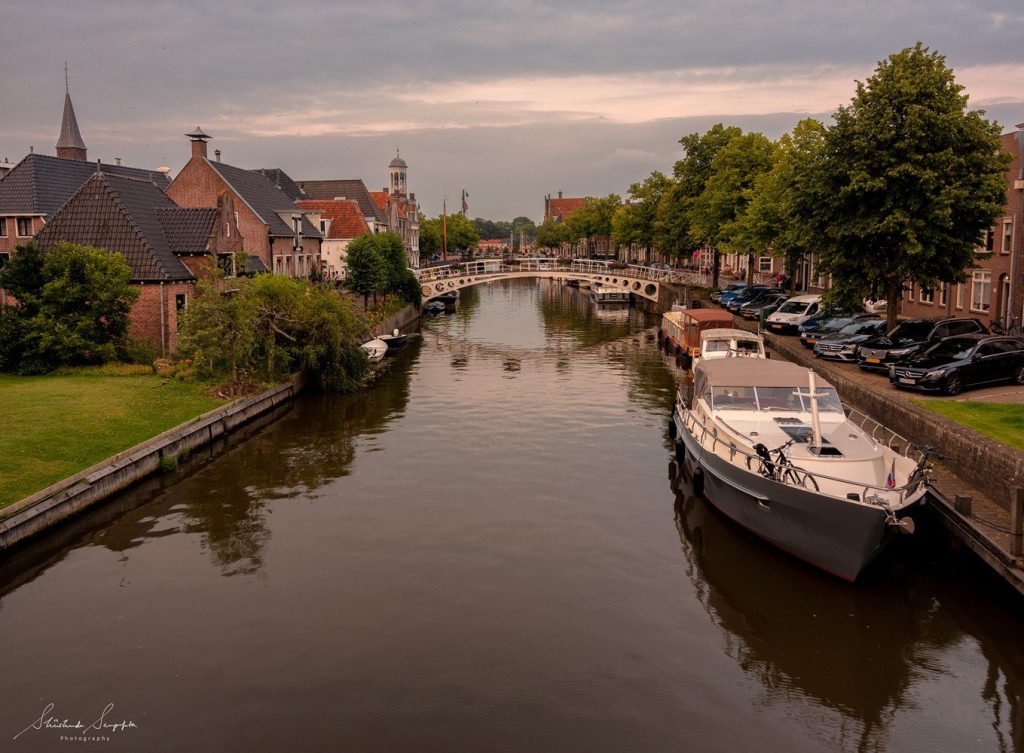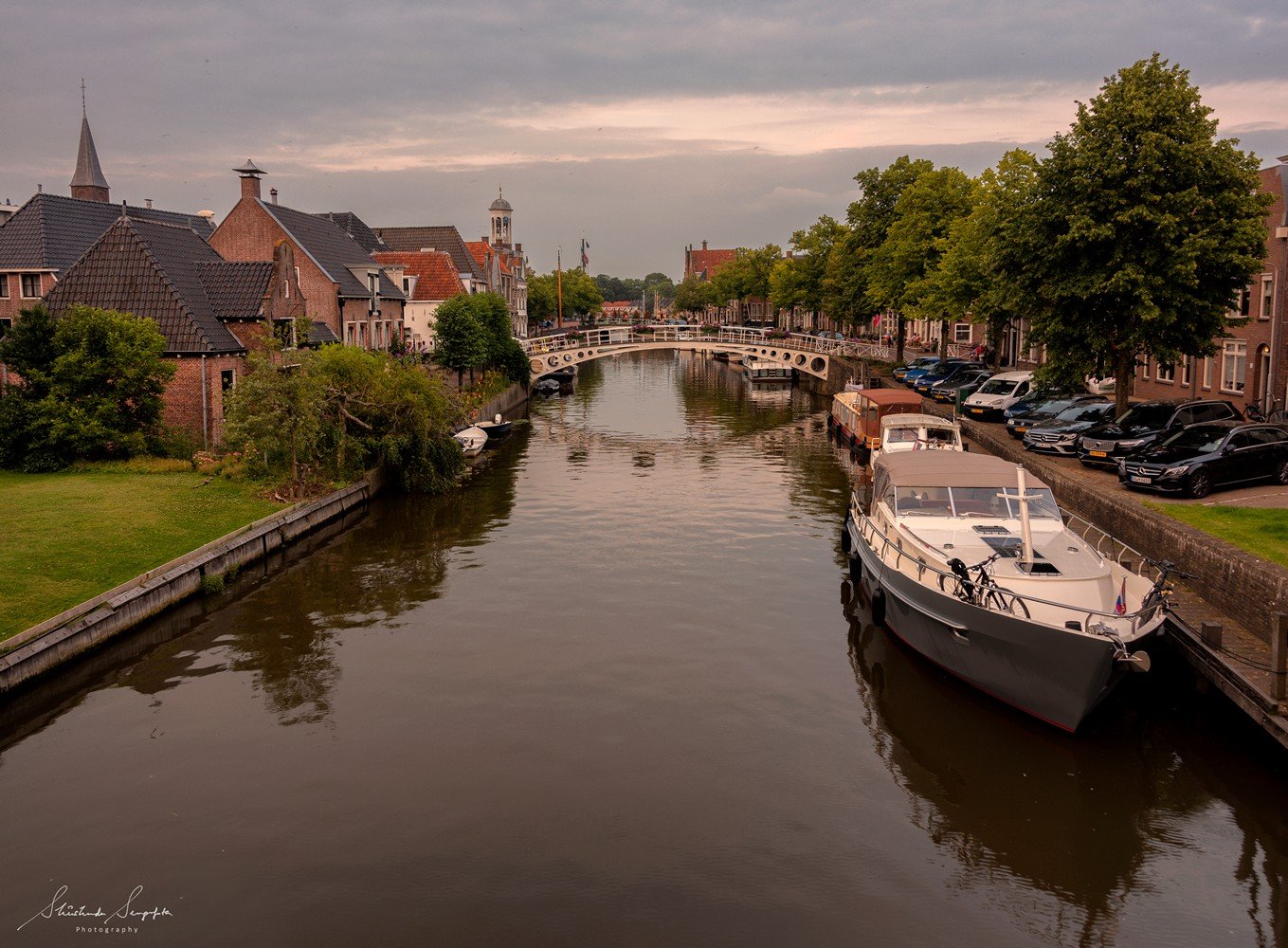
Introduction
In the Netherlands, men have been battling with the sea for centuries to gain more solid ground. With over a quarter of the territory below sea level, and a significant portion reclaimed through famous polders, it’s clear that geography shapes the landscape. Nowhere is this more apparent than in the Frisian region, on the northern coast, where the omnipresence of water is felt strongly. Constant winds from the North Sea move the windmills that have been pumping water over the dikes since the 13th century, a testament to the ongoing struggle of land against sea.
Frisia: A Unique Landscape
Frisia, the northernmost region of the Netherlands, offers a landscape distinct from the bustling cities like Amsterdam or Rotterdam. It’s a more rural, wild, and well-preserved area, perfect for slowing down amidst virgin coastal nature and abundant black cows. Bicycles are an integral part of the landscape here, alongside dikes, canals, windmills, rivers, and the coast. Fields of saffron, daffodils, hyacinths, and tulips add vibrant splashes of color to the scenery.
Exploring Frisia on two wheels can be an unforgettable experience, whether admiring the cultivated fields or the marshes. The Frisians are proud of their unique language, displayed prominently on road signs. Not only did they build dikes to protect their lands, but they also created the lands themselves. The distinctive marshes, intertwined with the Waddensea (Frisian Sea), are UNESCO-listed treasures. The islands in this sea are the trendiest summer destinations in the country, boasting forests, dunes, and beaches traversed by cycling paths.
Leeuwarden: Museums and Gastronomy
The capital of Frisia, Leeuwarden, presents an unexpected blend of stylish streets, ancient alleyways, canal-side cafes, and innovative urban projects. Exploring the trio of excellent museums in Leeuwarden, along with cultural projects inherited from its stint as the European Capital of Culture in 2018, is a must. The city buzzes with cyclists along wide lanes flanking the canals, illuminated with purple hues at night. Hospitality permeates the many cafes and bars, filled with Liwwadders (the official demonym of Leeuwarden) eager to enjoy life.
Zaailand, the central square, hosts the Fries Museum, housed in a striking building with a glass facade and a distinctive wooden and steel roof. Another museum worth visiting is the Keramiek Princessehof, showcasing a vast collection of tiles, Delft ceramics, and works from various countries. Leeuwarden also pays homage to the famous graphic artist M.C. Escher, who was born and lived here in the early 20th century.
Harlingen: A Maritime Heritage
Between the capital and the picturesque village of Harlingen lies a region of farmland with one significant population center: Franeker, an old university town. Harlingen is the only Frisian port that has maintained its connection with the sea. Its historic center, a protected ensemble of picturesque houses from the 16th and 17th centuries lining the canals, exudes charm. The carillon of the town hall has been chiming since the mid-18th century, marking time for the city. Harlingen is best explored on foot, strolling along the canals with their regularly lifting drawbridges, especially the Zuiderhaven and Noorderhaven.
Harlingen serves as the departure point for ferries to the islands of Terschelling and Vlieland. The town retains traces of its maritime past in its buildings, and the Hannemahuis Museum is dedicated to the city’s maritime heritage, including its role in the whaling industry. A surprising attraction lies just six kilometers east of Harlingen: the Eise Eisinga Planetarium, the world’s oldest functioning planetarium, built by a wool carder in the 18th century.
Southwest Frisia: Windsurfing and Seafaring Villages
The lake region southwest of Leeuwarden is perfect for sailing enthusiasts, windsurfers, and water sports lovers. Since the construction of the Afsluitdijk dike, coastal villages like Hindeloopen and Stavoren have become more tranquil, echoing their maritime past.
Sneek, the largest city in the region, has been a hub of Frisian canals for centuries, with a museum illustrating various aspects of navigation. Hindeloopen, nestled on the shores of the IJsselmeer, retains its charm as a former port town, with narrow streets, flower-lined canals, and skilled craftsmen producing hand-painted oak furniture. Sneek’s Waterpoort, built in 1613, is an iconic landmark, and the city is a haven for sailing enthusiasts.
Discovering the Frisian Islands
The curve of islands off the coast of Frisia—Vlieland, Terschelling, Ameland, and Schiermonnikoog—forms a unique natural region distinct from the rest of the Netherlands. These islands, with their diverse landscapes ranging from polders and salt marshes to beaches and dunes, offer a glimpse into a remote and fascinating world.
Vlieland, the smallest and least visited island, is known for its rugged beauty and tranquility. With only a thousand inhabitants, it’s an ideal destination for those seeking solitude amidst wind-swept landscapes. Terschelling, the largest and most urbanized of the Frisian islands, offers over 250 kilometers of cycling and hiking trails, along with historical sites like the Bunker Museum.
Ameland strikes a balance between nature and civilization, with charming villages like Nes and Hollum set against a backdrop of dunes and marshlands. The island’s history as an independent lordship adds an intriguing dimension to its character. Schiermonnikoog, the smallest and quietest of the islands, is a haven for nature lovers and offers stunning views of the starry night sky due to minimal light pollution.
Lauwersmeer National Park: Wetlands and Seals
Lauwersmeer National Park, located opposite the Frisian islands on the mainland, is a natural paradise. The park protects the artificial shallows of Lauwersmeer, home to a diverse range of bird species and wild horses. Zoutkamp, a fishing village within the park, offers a glimpse into traditional fishing practices, including the smoking of eels.
The newly constructed Seal Center in Lauwersoog provides insights into the Wadden Sea ecosystem and offers opportunities for seal-watching. The park’s rugged beauty and diverse wildlife make it a must-visit destination for nature enthusiasts.
Conclusion
Frisia offers a unique blend of natural beauty, maritime heritage, and cultural richness. From the picturesque villages and bustling cities to the serene islands and expansive wetlands, this region of the Netherlands has something to offer every traveler. Whether exploring by bike, boat, or on foot, Frisia promises unforgettable experiences and lasting memories.
With its rich history, diverse landscapes, and welcoming communities, Frisia invites visitors to discover the essence of Dutch culture and heritage in a setting unlike any other. Explore the Frisian countryside, immerse yourself in maritime history, and embrace the natural beauty of this enchanting region. Frisia awaits, ready to captivate and inspire all who venture to its shores.

